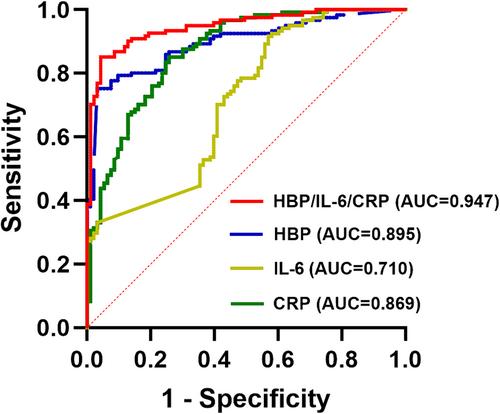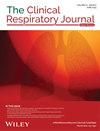Prediction of Clinical Severity of COVID-19 Using a Combination of Heparin-Binding Protein, Interleukin-6, and C-Reactive Protein: A Retrospective Study
Abstract
Background
Systemic inflammation stands as a pivotal factor tightly interwoven with the progression of COVID-19. This study endeavors to elucidate the significance of three key inflammatory molecules, that is, heparin-binding protein (HBP), interleukin-6 (IL-6), and C-reactive protein (CRP), in assessing the severity and prognostic implications of COVID-19.
Methods
The demographic, clinical, and laboratory data were retrospectively collected from a cohort of 214 adult patients diagnosed with COVID-19. Patients were divided into two groups: nonsevere (n = 93; 43.5%) and severe (n = 121; 56.5%). Additionally, based on their organ function, patients were categorized into nonorgan failure (n = 137) and organ failure (n = 77) groups. The levels of inflammation-related cytokines were then compared among these defined groups.
Results
The severe group was characterized by a higher proportion of males, older age, and longer hospital stays compared to nonsevere cases. Additionally, severe cases exhibited a higher prevalence of underlying diseases and organ failure. Statistical analysis revealed significantly elevated levels of HBP, IL-6, and CRP in the severe group. HBP, IL-6, and CRP were identified as independent risk factors for severe COVID-19. Furthermore, a combined assessment of these biomarkers demonstrated superior diagnostic sensitivity (85.10%) and specificity (95.70%) for predicting COVID-19 severity. A positive relationship between elevated HBP, IL-6, and CRP levels and impaired organ function was also observed. The predictive efficiency significantly increased (hazard ratio = 3.631, log-rank p = 0.003) when two or more of them were combinedly used. Notably, elevated levels of HBP, IL-6, and CRP were associated with an increased risk of mortality.
Conclusions
In conclusion, the combined assessment of HBP, IL-6, and CRP offers enhanced accuracy and specificity in predicting the severity, organ failure, and mortality risk associated with COVID-19.


 求助内容:
求助内容: 应助结果提醒方式:
应助结果提醒方式:


